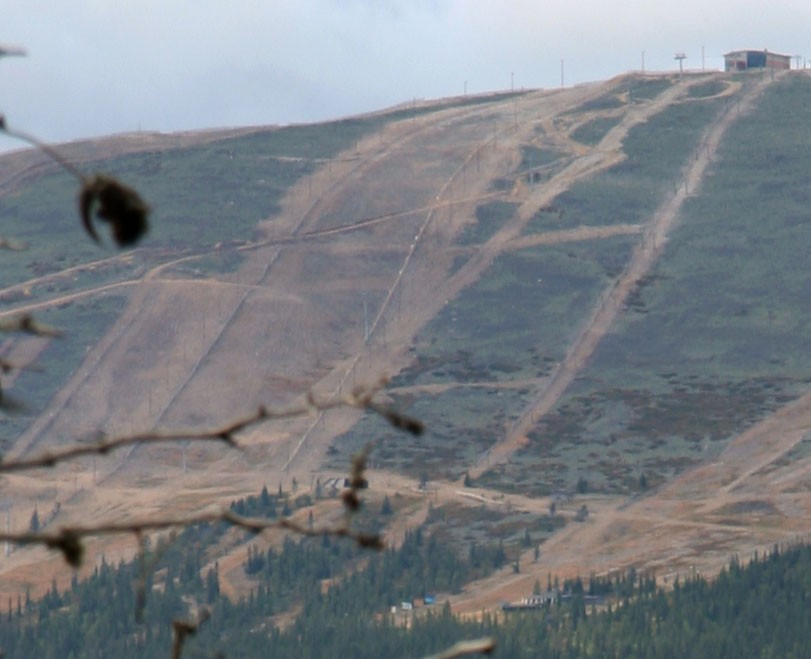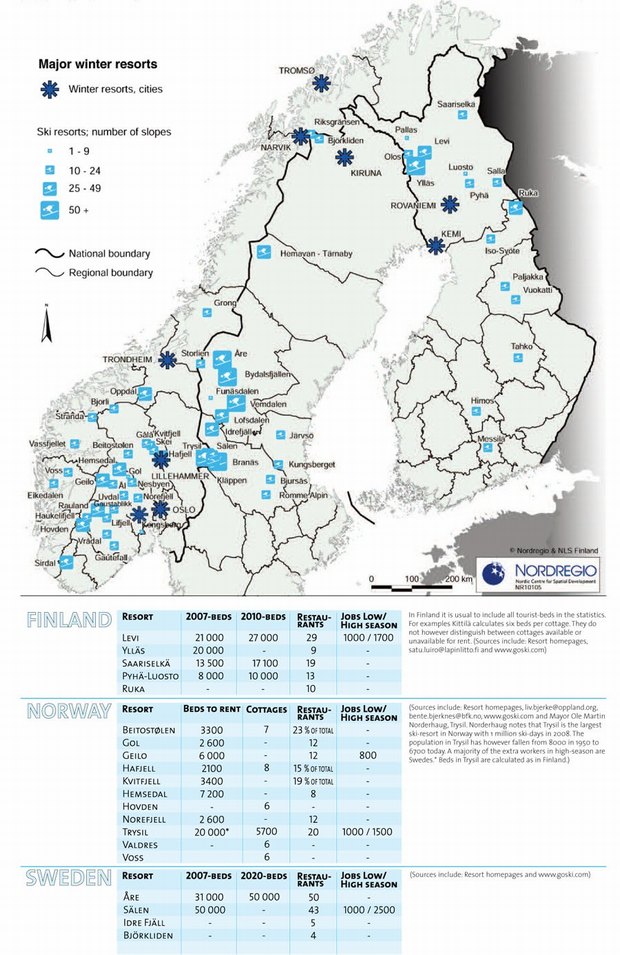Recent decades have seen a huge growth in winter-tourism across the Nordic countries. This seems to have taken place, in the main, in sparsely populated areas in addition to a small number of already establish tourism-oriented centres. The availability of transport in combination with the natural topography and guaranteed snowy winters is the main driver in the development of these new winter resorts. Slopes and tracks are open well into the late spring period, the availability of building sites, available investment and the infrastructure and various other necessary facilities as well as good marketing have all played a major role here.
 Specifically in terms of the skiing industry the long winter season, aided by the availability of artificial lighting, is a significant Nordic advantage. In addition, many of these resorts are now also working ever harder to expand into the provision of summer activities like golf, hiking and fishing. Indoor skiing is also on the agenda in a few places.
Specifically in terms of the skiing industry the long winter season, aided by the availability of artificial lighting, is a significant Nordic advantage. In addition, many of these resorts are now also working ever harder to expand into the provision of summer activities like golf, hiking and fishing. Indoor skiing is also on the agenda in a few places.
The major ski- and other winter resorts are shown on the accompanying map. The selection of the largest ski resorts is based on the total number of lifts, slopes and track kilometres. Visibility is also included here – each resort features in the commercial websites of www.goski.com, www.j2ski.com and www.skiinfo.com.
Altogether 63 skiing- and seven other sites are shown on the map. Sixteen of these skiing resorts are located in Finland, thirty in Norway and seventeen in Sweden. Regional destinations, like Sälen in Sweden with four peaks/fields (Lindvallen, Högfjället, Tandådalen and Hundfjället) are counted only once.
 In addition, some cities with skiing and other winter facilities and events are included. The Finnish city of Rovaniemi can be cited as an example here with the ski resort of Ounasvaara and the famous Santa Claus village located directly on the Polar Circle.
In addition, some cities with skiing and other winter facilities and events are included. The Finnish city of Rovaniemi can be cited as an example here with the ski resort of Ounasvaara and the famous Santa Claus village located directly on the Polar Circle.
The total number of beds and services is another way to measure the size and development plans of the resorts. Some of the main figures are shown in the table below.

By Johanna Roto and Odd Iglebaek